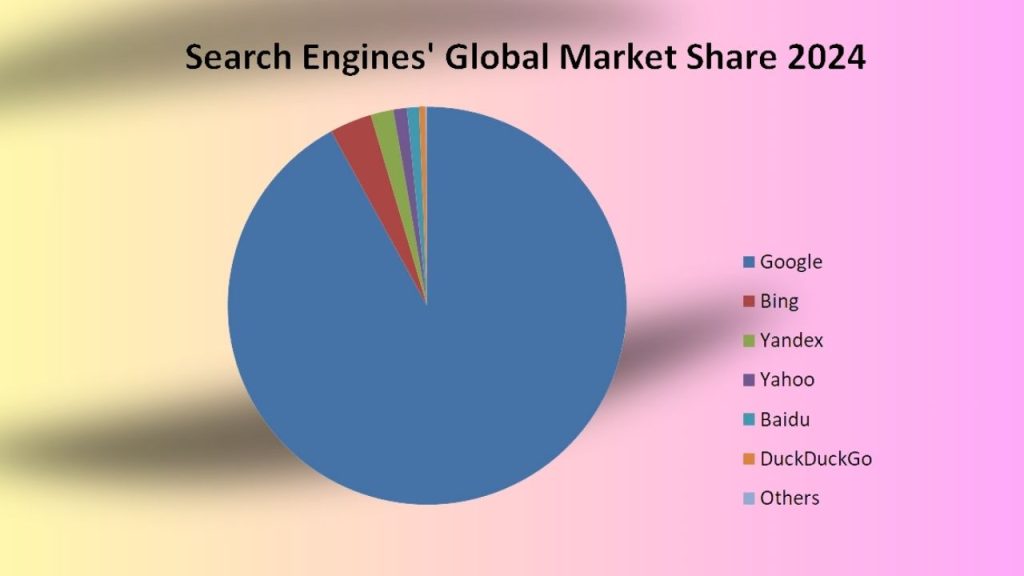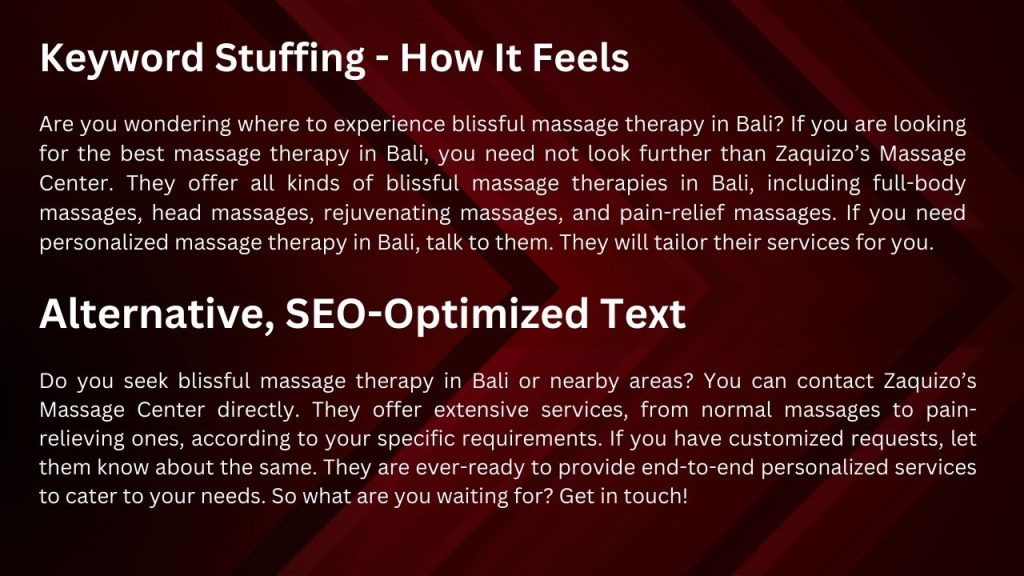Do you know what the best thing about the digital landscape is?
It changes, constantly.
But what is good about this? Well, you always have a chance to upgrade and renew your strategies. If one thing doesn’t work one day, you can try another the next day and get to where you want to go.
For example, if your website’s search engine visibility is low right now, the changes in strategies can help improve it. No one can be in the top position for long, unless they upgrade their strategies, according to the latest trends.
Talking about 2024 SEO practices, you must know by now that methods that previously distinguished your website and boosted its search result ranking might no longer be effective. If you plan to stick to those outdated methods, you may risk lowering your website’s ranking. Therefore, it is essential to stay ahead of the curve always by embracing newer, more effective strategies.
For example, if you have an online store with a moderate ranking, you should consider leveraging all the opportunities that you have in hand. A dependable SEO agency specializing in eCommerce can help you with the upgrade. Understanding and utilizing all the available, modern SEO tactics can be a little too overwhelming. A professional team can handle that part, while you enjoy only the FRUITS.

In this guide, we aim to fill you in on the outdated SEO practices, and simultaneously with the strategies that are going to work miracles for your website today.
By keeping up to date on these advancements you can guarantee that your website stays competitive and visible, in the changing environment.
But first of all, you need to know what’s going on in the SEO landscape.
Embracing Modern SEO Practices: Key Statistics and Trends for 2024
Knowing about the latest statistics regarding SEO practices in 2024 will help you understand how to improve your website’s ranking and visibility. Here are some to keep you updated, before you let a professional team scale up your website’s online performance.
Search Engine Usage and Market Share
Google process nearly 99,000 search queries per second globally. Coming to market share, the search engine giant, right now, has over 92% of its share in the global market. It is followed by Bing with 3.43% of global searches, and Yandex with 1.84%.

However, these are not constant and growing too. Hence, you need to have an online presence in multiple search engines to grab maximum eyeballs.
Voice searches are getting popular as well. At present, an average of 93.7% of search queries are answered by voice search assistants. You Know what that means, right? You need to optimize your target keywords according to voice searches too.
Mobile Optimization and User Experience
There are 7.41 billion mobile users in the world right now. Sites that aren’t mobile-friendly are bound to lose visitors. Further, Google values sites with fast loading, smooth interactions, and stable design through Core Web Vitals ranking signals. If this is not the right time to optimize your website for mobile searches then what is?
Content Quality and Relevance
What does high-quality content stand for in 2024? Content that is comprehensive with a high readability score, relevant to the user’s requirements, and of course, search-engine-friendly is what we call high-quality content today. Your website and marketing content should add real-time value; otherwise, there is no point. The AI revolution has helped website owners create personalized content for their audience. No wonder 75% of customers trust content created through generative AI more than low-quality jargon. Also, 65% of businesses are getting better search rankings with the help of AI-generated content.
Backlink Quality over Quantity
Quality backlinks now matter more than quantity. Good, relevant links from respected sources can boost search rankings. If you are still using spammy, low-quality links, it can hurt your website’s rankings. According to the latest stats, link campaigns focused on quality over volume were 15% more effective in 2023. Relevance and authority in quality linking will take the front seat in 2024.
Local SEO and Personalization
According to the statistics, a whopping 97% of users search for local businesses online. And among them, 1.5 billion people end up visiting the locations that they searched on Google. So you see how local SEO is important to your business prospect? Well!
Voice Search and Featured Snippets
Smart speakers and voice assistants are currently numbered at 4.2 billion worldwide. On top of that, 50% of adults use voice searches regularly.

Featured snippets answer their queries directly at position zero (the top of SERPs or Search Engine Results Pages). Optimizing for voice search and snippets is essential for any website owner these days. Improved content answers direct questions in a comprehensive manner, thus boosting search engine rankings.
Video Content and SEO
According to 90% of online marketers, video marketing helped them generate more and better leads faster. Then again, 87% of them revealed that incorporating videos in their SEO strategies helped increase revenue. Also, you should know that videos have 50x more capability to rank in organic search results than simple, textual content. No wonder Google’s YouTube stands second in the list of top search engines. Do you see how important video marketing is in the digital landscape of today?
As we have mentioned before, 2024 SEO requires highly advanced methods over old and outdated tactics. A few key elements that need to be addressed and improvised are mobile optimization, end-to-end positive user experience, exceptional content, reliable backlinks, localized SEO, personalization, voice search readiness, and incorporating videos in marketing strategies. Search engines are rapidly changing their ways. Hence, adapting is the need of the hour!
How to adapt? Scroll on!
Keyword Stuffing For Gaining Visibility
Advanced SEO strategies of 2024 need to do away with conventional keyword stuffing in content. Besides being a Black Hat SEO strategy, keyword stuffing also adds no value to modern content. Search engines today have a better understanding of context, rendering keywords less important than they were before. Meaningful content that adds value to users’ intent is ranked automatically now, without contextual keywords.
Outdated Practice: Keyword stuffing was a common method where website creators packed their pages with numerous key phrases. The goal was to deceive search engines into ranking their site higher, increasing its visibility to online searchers. This approach gained popularity, as having an easily discoverable website was the primary goal of business owners.
However, stuffing a web page with keywords often resulted in text that was hard and unpleasant to read. The content became a mishmash of words that didn’t flow well together, making it challenging for readers to grasp the main ideas. Visitors encountered information that seemed misplaced or failed to address their inquiries. This not only annoyed users but also diminished their trust in and the likelihood of revisiting the website. Consequently, the overall quality of online content declined.

Now, search engines eventually improved their ability to detect this tactic and began penalizing websites that excessively used keywords. This much-necessary change now compels website owners to prioritize the quality and relevance of their content, leading to a more satisfactory experience for internet users.
Modern Strategy: Nowadays, search engines like Google value content that genuinely benefits users’ intent. They prefer content where keywords are seamlessly integrated and don’t appear forced. Crafting content that caters to your audience’s queries and fulfills their requirements effectively is the key to getting Google’s attention.
You should now carefully integrate relevant keywords to supplement your content seamlessly. Ensure your content is straightforward to grasp, fostering an enjoyable reading experience for your site visitors. Such a positive encounter for visitors can up the ante of your site’s allure to search engines.
It is the need of the hour to always keep your audience in mind and prioritize their needs in your content to bolster your site’s visibility in search results. In the end, you should focus on the excellence of your content – how well it meets your audience’s requirements. The search engines will appreciate if you can create a website that is both easier and more comprehensive for users to navigate.
Buying Backlinks To Increase Credibility
In the past, buying backlinks was seen as a way to boost a website’s visibility and search engine ranking. Website owners would buy links, from sites thinking that having many backlinks showed popularity and relevance, to search engines. However many of these purchased backlinks were of poor quality and irrelevant to the website’s content, which ultimately hurt the site’s credibility.
As search engines evolved, they became better at identifying and penalizing this practice, after understanding that these backlinks did not represent endorsements of the website’s content.
Outdated Practice: Previously, gathering many backlinks was a popular method to boost a website’s perceived importance and enhance its search result ranking. This involved acquiring numerous links to your website from various online sources, most of them even irrelevant to the brand’s content strategy. It was a misconception that several links would enhance the perceived authority of a website in the eyes of search engines.
With time, search engines, like Google, became more sophisticated and started detecting this tactic. Today, these can easily differentiate whether a chunk of links comes from unreliable or unrelated sources. If you are still in the practice of buying links for your website, know that it will hamper your website’s credibility (even get it penalized) rather than improve it.
Modern Strategy: Today, it is essential to create valuable content that people find helpful and want to share. It is a natural way of earning backlinks for your website. Instead of buying links, using high-quality content can attract the attention of websites, leading them to share it with their audience and link back to your site.
You can also establish connections within your industry by collaborating with peers, contributing guest articles/blogs to websites with high domain authority, and networking with experts in your field. Building such relationships increases the likelihood of reputable sites linking to your content, thus taking your link-building strategy several grades up.
Over-Optimized Anchor Text
In the past people used to stuff keywords into the parts of links to boost their website’s search engine ranking. However, this approach often resulted in unnatural-sounding content that was difficult to understand. Search engines caught on to this tactic and began clamping down on it, viewing it as deceitful. Now the key is to maintain variety and relevance by ensuring that the links seamlessly integrate with the content and are meaningful, for the reader.
Outdated Practice: Previously, people used to put exact-match keywords into the clickable text of links, both within their site and when linking to other sites. This clickable text is called anchor text. They thought that using the exact words they wanted to rank for in search engines would help their website’s SEO.
However, excessively doing this is viewed as going overboard or “over-optimization” these days. Search engines, such as Google, are clever and can detect when something appears off. If they encounter identical words repeated frequently in anchor texts, they might suspect an attempt to deceive them into boosting the site’s ranking. Consequently, the search engine may lose trust in the site, which isn’t beneficial for its visibility in search results.
Modern Strategy: When you’re linking to other pages, either on your website or to other websites, it’s good to use different types of clickable texts (or anchor texts). These texts should match the way you normally write, so they don’t stick out or seem out of place. You can use regular phrases that you’d use in everyday conversation, terms that are specific to your brand, or even just simple web addresses. The idea is to mix it up so that it all looks and feels natural. This variety makes your links seem more genuine and less like you’re trying to game the system.
Search engines, like Google, pay attention to how links are used in your content. If all your links look the same or seem forced, it might raise a red flag for them. They prefer it when your link usage appears spontaneous and fits smoothly with your content. The aim is to ensure that your array of links, known as your ‘link profile’ appears natural, to search engines. This practice can enhance how favorably search engines view your website, potentially boosting its visibility, in search results.
Focusing Solely on Google
Concentrating all your SEO strategies just on Google is becoming an outdated approach. While Google remains the top search engine worldwide, it’s crucial to recognize the diversity of platforms where users search for content. Other search engines like Bing, video platforms like YouTube, and even social media networks offer unique search capabilities. These platforms are increasingly shaping how users interact with the internet and discover content. By expanding your focus beyond Google, you can tap into a broader audience and adapt to the evolving digital landscape.
Outdated Practice: Putting all your SEO in Google isn’t working anymore, to be clear. There are other spots people scout for info. Take Bing, for instance. Its global market share increased to 3.43% from 2.81% last year. YouTube is also gaining prominence because lots of people search for videos (both long and short) these days. Even social media sites have their search features that people use to find things nowadays. All these different platforms are becoming more important in how people experience the internet. So, it’s a good idea to consider how your content can be found on these other platforms, not just Google.
Modern Strategy: Make your content suitable for various platforms and search engines to help meet all users’ requirements. Each platform and search engine has its algorithms, which are its way of deciding what content to show. It’s important to know how these algorithms work because they’re different for each platform.
For example, what works for Google might not work for Bing or YouTube. People also act differently on different platforms, so it is crucial to think about what they’re looking for on each one. By adjusting your content to fit each platform, you can connect with more people on multiple platforms, thus enhancing your brand’s visibility.
Also, this approach helps bring visitors to your site from multiple platforms. If something changes with one search engine or platform, your traffic won’t disappear overnight. Reaching out across different platforms can also introduce your content to people who might not have found it otherwise. Spreading out your efforts can help make your online presence stronger and more stable.
Ignoring User Experience (UX) for SEO Gains
Back in the day, lots of websites didn’t care much about how people felt while surfing. All they wanted was to climb to the top of search results, even if it meant wrecking the user’s experience. So, they stuffed their sites with keywords and links, making them messy and hard to use. Visitors would get lost and irritated, likely bailing out fast. It was like they missed the memo: a good website needs both SEO and happy users.
Outdated Practice: In the old days, people building websites cared more about SEO than about people using them. SEO is about getting your site noticed on search engines, Google for instance. So, people often overlooked how visitors felt when they landed on the site. This led to websites that were packed with keywords and links, but not very user-friendly, unfortunately.
As a result, visitors found these sites hard to use because they were cluttered and confusing. It was difficult to find the information you needed because of all the unnecessary stuff in the way. It also made a lot of visitors feel frustrated and annoyed because the poor design made it hard to navigate. As a result, instead of staying and looking around, visitors would often leave the site quickly, increasing bounce rates. This shows how putting SEO before user experience wasn’t the best approach for making websites.
Modern Strategy: User Experience (UX), known as how people interact with stuff, has become a key ranking factor for SEO. Nowadays, Google and pals love sites that are easy for peeps to use and don’t make them want to scream. When creating a website the key is to ensure it’s user-friendly and accessible, on both computers and mobile devices. It should also be optimized for speed like a cheetah chasing its prey.
By jazzing up your content, you’re making your site more fun and useful for visitors. Making people stay on your website is good. Updating the look and making it easy to explore can help. Staying updated about search engine optimization (SEO) trends is key for better visibility. Doing all this jazz can make your users happier, and the search engines will give you a pat on the back. So, focus on making things smooth for your users, and you might just find yourself higher up in those search results.
Conclusion
Understanding new SEO trends is the key to achieving online success. In 2024, you need to adjust your strategies, do away with outdated practices, and adapt to the new-age SEO to keep your website relevant for users and ranking high on SERPs. A website that meets users’ expectations also pleases the search engines, so focus on the first criteria.
Keep in mind, that the primary objective of SEO isn’t solely to attain a high ranking in search results but also to provide genuine value to your audience. When your website delivers valuable content and a positive user experience, individuals will trust and interact with your material. This, in turn, is essential for cultivating a loyal audience and fostering sustained growth. To enhance the effectiveness of your website, focus on meeting the needs and wants of your audience when crafting an SEO strategy.

